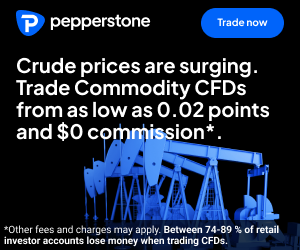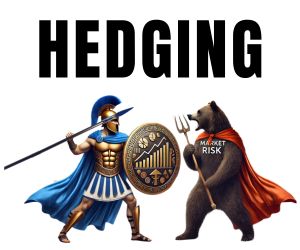STOCHASTIC OSCILLATOR SCALPING STRATEGY
The Stochastic Oscillator is one of the oldest and most popular momentum indicators, and it continues to hold value for scalpers in the Forex market. Designed to highlight overbought and oversold conditions, it helps traders spot short-term reversals and momentum bursts in fast-moving charts. Yet, because the Stochastic reacts quickly, it can also generate a lot of noise. This article introduces the basics of the Stochastic, explains how to filter out false signals, and outlines clear rules for using it in a disciplined scalping framework.

Stochastic Basics
The Stochastic Oscillator has been a cornerstone of technical analysis since it was developed by George Lane in the 1950s. At its core, it measures the position of the most recent closing price relative to the high–low range over a chosen number of periods. This simple calculation gives traders a sense of whether price is closing near its recent highs, lows, or somewhere in between. For scalpers, who rely on spotting micro-turns in price, the Stochastic’s ability to highlight short-term momentum shifts makes it a valuable tool.
The Formula and Its Meaning
The Stochastic Oscillator is usually represented by two lines: %K and %D. The %K line shows the raw measure of momentum, while the %D line is a moving average of %K, often taken over three periods. When %K crosses %D, traders interpret it as a change in short-term momentum. The values range from 0 to 100, with readings above 80 generally seen as overbought and those below 20 considered oversold. For scalpers, these thresholds act as reference points for spotting entry and exit opportunities in volatile, short-lived moves.
Fast, Slow, and Full Stochastics
There are three common types of Stochastic indicators: Fast, Slow, and Full. The Fast version reacts quickly to price changes, but it can be too sensitive for practical use in scalping, as it tends to produce excessive signals. The Slow Stochastic smooths out this noise by averaging the %K line over a longer period. The Full Stochastic offers the most flexibility, allowing traders to customise both the %K and %D smoothing. In a scalping context, many traders prefer the Slow or Full Stochastic with short lookback periods—such as 5, 7, or 9 bars—to balance responsiveness with usability.
Why Scalpers Like It
The Stochastic Oscillator is particularly suited to scalping because it focuses on momentum relative to recent ranges rather than absolute price levels. In other words, it helps traders judge whether buyers or sellers are dominating in the immediate short term. This can be invaluable for catching quick retracements or anticipating the exhaustion of sharp bursts. Unlike some indicators that lag significantly, the Stochastic tends to be more responsive, which is exactly what scalpers need when they only hold trades for a few minutes or even seconds.
The 80/20 Rule and Its Limitations
The traditional overbought/oversold thresholds of 80 and 20 are widely used, but scalpers often adjust them to reflect the fast pace of short-term markets. For instance, in highly volatile sessions, using 85/15 or even 90/10 can help filter out weak signals and focus on stronger extremes. Conversely, during quieter trading hours, sticking with 80/20 may provide enough sensitivity. The key is to understand that the thresholds are guides, not absolute rules. Price can remain overbought or oversold for extended periods, especially in trending conditions, so blindly fading every signal can be costly.
Reading Crossovers
One of the most common ways traders use the Stochastic is by watching for crossovers of the %K and %D lines. A bullish signal occurs when %K crosses above %D in oversold territory, while a bearish signal is generated when %K crosses below %D in overbought territory. For scalpers, these crossovers provide potential entry points for trades aiming to capture quick price reactions. However, relying solely on crossovers without considering context can lead to frequent false starts. Many professionals combine crossovers with support/resistance levels or candle patterns to improve accuracy.
Settings for Scalping
In scalping, settings need to be adapted to the pair and timeframe. A 5,3,3 setting—where %K is calculated over five periods, smoothed by three, and %D averaged over three—tends to work well for fast-moving charts like the EUR/USD one-minute. For slightly less volatile pairs, a 9,3,3 setting may provide smoother signals. The important part is testing different settings in live conditions and finding a balance between speed and reliability. Too sensitive, and the Stochastic will cry wolf; too slow, and it will miss the quick turns that scalpers depend on.
Practical Example
Consider a trader scalping GBP/JPY on a one-minute chart during London trading hours. They set the Stochastic to 7,3,3 with thresholds at 85/15. As the pair surges, the Stochastic climbs above 85, then %K crosses below %D, indicating fading momentum. The trader takes a short entry, aiming for a quick 8–10 pip move back toward the mean. Because the signal coincides with a known resistance level, the probability of success is improved. This simple use case illustrates how Stochastic basics—position, thresholds, and crossovers—translate into real-world scalping opportunities.
For scalpers, mastering the basics of the Stochastic Oscillator is about understanding what the indicator measures and how to tailor it to fast markets. With the right settings and context, it can serve as a sharp lens into short-term momentum. In the next section, we’ll explore how to reduce the noise and filter signals so that the Stochastic becomes a reliable tool rather than an overactive distraction.
Signals & Noise
The Stochastic Oscillator is quick to respond, which makes it attractive for scalpers—but that same responsiveness also generates plenty of false signals. In fast-moving markets, the indicator can flip from overbought to oversold within minutes, tempting traders into chasing reversals that never materialise. To use the Stochastic effectively, scalpers must learn how to separate genuine signals from noise. Filtering techniques, context, and confluence with other tools all help transform a raw indicator into a disciplined part of a trading plan.
The Nature of False Signals
False signals usually occur when the Stochastic flashes an extreme reading, yet price continues in the same direction. For example, in a strong uptrend, the oscillator may remain overbought for long stretches, repeatedly suggesting a reversal that never comes. Scalpers who take every overbought signal risk fighting against momentum and racking up losses. Recognising that overbought does not always mean “time to sell”—and oversold does not always mean “time to buy”—is a crucial first step in filtering noise.
Trend Context
One of the simplest and most effective filters is trend context. When price is above a short-term moving average—say a 20-period EMA—traders give more weight to bullish Stochastic signals and largely ignore bearish ones. The opposite applies in a downtrend. By aligning trades with the prevailing trend, scalpers reduce the odds of being caught in countertrend moves that are little more than noise. This filter alone can turn an otherwise overactive indicator into a far more reliable guide.
Support and Resistance
Another key filter is the use of support and resistance levels. If the Stochastic shows oversold while price is testing a known support zone, the signal carries more weight. If it shows the same reading in the middle of a range with no nearby level, the risk of noise increases. For scalpers, combining oscillator signals with price structure is a way of demanding extra confirmation before committing capital. Even intraday micro-levels, like yesterday’s highs or round numbers, can serve as valuable filters.
Multiple Timeframes
Checking Stochastic signals across multiple timeframes is another effective way to reduce noise. For instance, a one-minute Stochastic may show overbought, but if the five-minute and fifteen-minute oscillators are still rising strongly, the short-term reversal is less likely to succeed. When two or more timeframes align, the probability of a successful trade improves. This approach helps traders avoid acting on the inevitable whipsaws that occur in smaller timeframes during volatile sessions.
Combining with Other Indicators
The Stochastic Oscillator works best when paired with complementary indicators. For example, combining it with Bollinger Bands helps confirm whether price is genuinely stretched. If Stochastic is overbought while price touches the upper band, the chance of a reversal grows. Likewise, pairing it with volume measures or tick activity can confirm whether a breakout has enough strength to sustain. The key is to avoid redundancy—don’t pair Stochastic with another oscillator that shows the same information. Choose tools that provide distinct, confirming insights.
Timing and Session Filters
Market sessions influence how noisy the Stochastic can be. During quieter Asian hours, small moves may cause the oscillator to flip repeatedly, generating unreliable signals. In contrast, the London and New York sessions often produce cleaner swings where Stochastic extremes align with genuine opportunities. Some scalpers avoid using the indicator during low-volume times altogether, focusing instead on periods of higher liquidity where the signals carry more weight.
Practical Example
Imagine scalping EUR/USD on the one-minute chart. The Stochastic dips below 20, suggesting oversold conditions. On its own, this could be a false signal in a strong downtrend. But suppose price is also approaching yesterday’s support level, and the five-minute Stochastic shows signs of flattening. The trader enters a small long position, with the confidence that multiple filters line up. This combination reduces the odds of being whipsawed and increases the likelihood of catching a genuine pullback.
For scalpers, the difference between profit and loss often comes down to avoiding noise. By applying filters—trend context, support and resistance, higher timeframes, and complementary indicators—the Stochastic Oscillator becomes less of a distraction and more of a disciplined tool. In the next section, we’ll pull these insights together into clear scalping rules for entries, exits, and risk management.
Scalping Rules
Turning the Stochastic Oscillator into a practical tool for scalping requires clear, disciplined rules. Without a structured approach, the indicator’s rapid signals can lead to overtrading and frustration. Effective scalping rules combine strict entry criteria, defined exit points, and robust risk management. By systemising how the Stochastic is used, traders can focus on execution rather than improvisation, reducing hesitation and emotional bias in fast-moving markets.
Entry Conditions
Entries should only occur when multiple factors align. A common rule is to wait for the Stochastic to cross out of overbought or oversold territory, rather than acting the moment it touches an extreme. For example, a buy setup might require the oscillator to dip below 20, then cross back above it, while price tests a support level. Some scalpers add confirmation from candlestick patterns—such as pin bars or engulfing formations—before entering. This helps avoid entries on weak or premature signals.
Exit Strategies
Exits are just as important as entries, particularly in scalping, where holding time is short and gains are small. A basic exit rule is to close trades when the Stochastic enters the opposite zone—closing longs when it approaches 80, and shorts when it nears 20. More advanced traders exit at predefined pip targets, such as 5–10 pips, depending on volatility. Stops are placed just beyond recent highs or lows, ensuring that losses are capped if the market breaks against the position. Consistency in exit rules prevents the common mistake of holding losers too long or cutting winners too quickly.
Risk Management
Risk per trade should remain small, often less than 1% of account equity, due to the high frequency of scalping. Traders use tight stops, but they also control risk by limiting the number of trades taken in a session. Overtrading on every Stochastic signal is one of the fastest ways to drain an account. A rule of thumb is to only trade setups that meet all entry filters and occur during liquid sessions like London or New York overlap. Limiting exposure in this way keeps risk under control even when multiple signals appear.
Combining Rules into a Framework
A complete scalping framework might look like this: trade only during London/New York hours; align with the short-term trend; wait for the Stochastic to exit and re-enter from extreme zones; confirm with support/resistance or candlestick structure; target 5–10 pips profit; place stops just beyond key levels; and risk no more than 1% per trade. With these rules written down and followed strictly, traders transform a reactive indicator into a disciplined system.
Examples of Rule-Based Scalps
Consider GBP/USD during the New York session. Price is trending upward, and the Stochastic dips below 20 before crossing higher. Price is also sitting on a round-number support at 1.2500. Following the rules, the trader enters long, sets a stop just below 1.2490, and targets 8 pips higher. The trade completes in minutes, delivering a controlled profit. Another example: EUR/JPY drifts sideways during low liquidity. The Stochastic whipsaws repeatedly, but the trader’s rules forbid scalping in quiet sessions, so they stay out, avoiding unnecessary losses. These examples show how discipline protects both capital and mindset.
Discipline and Consistency
The effectiveness of scalping rules depends on the trader’s ability to follow them consistently. Stochastic-based strategies thrive on discipline: taking trades only when conditions align, exiting as planned, and cutting losses without hesitation. Traders who improvise or ignore their own rules undermine the reliability of the system. In scalping, discipline is not optional—it is the core that makes the Stochastic Oscillator a useful tool rather than a source of noise.
By applying these rules—strict entries, clear exits, robust risk controls, and unwavering discipline—scalpers can harness the speed of the Stochastic Oscillator without being overwhelmed by its noise. Structured rules transform it from a reactive indicator into a trusted ally in the fast-paced world of Forex scalping.








